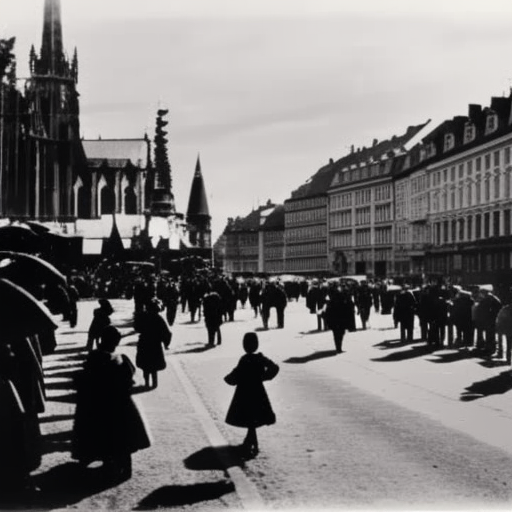The Siege of Vienna (1683)
The Siege of Vienna in 1683 was a pivotal event in European history that marked the turning point in the centuries-long conflict between the Ottoman Empire and the Habsburg Monarchy. The Ottoman Empire, under the leadership of Grand Vizier Kara Mustafa, launched a massive siege on Vienna, the capital of the Habsburg Monarchy, in an attempt to expand their empire further into Europe.
The Ottoman Empire’s Expansion
By the late 17th century, the Ottoman Empire had become a formidable force, stretching from southeastern Europe to the Middle East. The empire had already conquered significant territories in the Balkans and posed a significant threat to Christian Europe. Vienna, strategically located at the crossroads of Europe, was a crucial target for the Ottomans as its capture would open the way for further expansion.
The Siege Begins
In July 1683, the Ottoman army, numbering around 150,000 soldiers, laid siege to Vienna. The city, under the command of Count Ernst Rüdiger von Starhemberg, was defended by a garrison of approximately 11,000 soldiers, including both Habsburg troops and reinforcements from other European powers. The defenders faced a daunting task as they were heavily outnumbered and lacked sufficient supplies.
The Battle for Vienna
For two months, the Ottomans bombarded the city with artillery and attempted to breach its fortifications. The defenders, however, put up a fierce resistance, repelling numerous assaults and inflicting heavy casualties on the Ottoman forces. Despite their valiant efforts, the defenders were gradually losing ground, and the situation seemed dire.
The Relief Army Arrives
In a desperate plea for help, the defenders sent messengers to various European powers, seeking assistance. The Holy Roman Emperor Leopold I managed to rally a coalition of Christian forces, known as the Holy League, to come to Vienna’s aid. Led by Polish King Jan III Sobieski, the relief army marched towards Vienna.
The Battle of Kahlenberg
On September 12, 1683, the relief army engaged the Ottoman forces on the Kahlenberg Hill, overlooking Vienna. In a decisive battle, the Christian forces launched a massive cavalry charge, led by Sobieski himself. The charge broke through the Ottoman lines and caused chaos among their ranks. The Ottomans, caught off guard, were unable to regroup and were eventually routed.
The Aftermath
The victory at the Battle of Kahlenberg marked a turning point in the conflict between the Ottoman Empire and Christian Europe. The Ottoman forces were forced to retreat, abandoning their siege of Vienna. The Habsburg Monarchy, with the support of its European allies, launched a series of counteroffensives that pushed the Ottomans back and eventually led to the Treaty of Karlowitz in 1699, which significantly curtailed Ottoman expansion in Europe.
Legacy
The Siege of Vienna had far-reaching consequences. It not only halted the Ottoman advance into Europe but also bolstered the morale of Christian forces and inspired resistance against Ottoman rule in other parts of Europe. The battle is often seen as a symbol of the struggle between East and West, Islam and Christianity. It also marked the decline of the Ottoman Empire as a major power and the rise of the Habsburg Monarchy as a dominant force in Central Europe.
In conclusion, the Siege of Vienna in 1683 was a critical event that shaped the course of European history. The successful defense of Vienna by the Holy League and the subsequent defeat of the Ottoman forces marked a turning point in the conflict between the Ottoman Empire and Christian Europe. The battle had significant geopolitical and cultural implications, leading to the decline of the Ottoman Empire and the rise of the Habsburg Monarchy as a dominant power in Central Europe.












